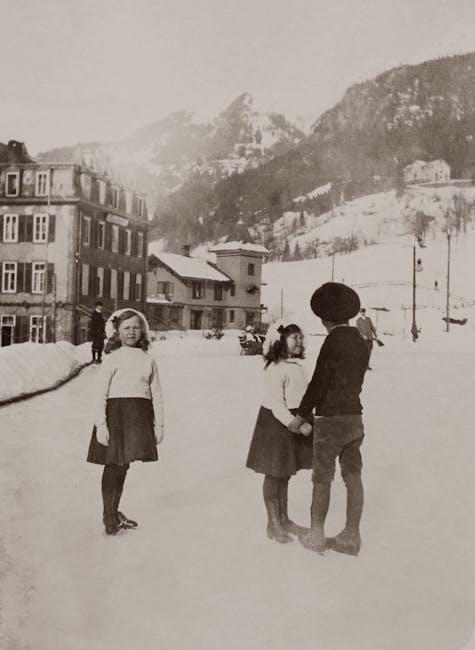In the ever-evolving landscape of global cinema, the enduring impact of classic foreign films remains both profound and undeniable. These cinematic masterpieces, transcending linguistic and cultural barriers, have not only shaped the aesthetic and narrative paradigms of their time but continue to influence contemporary filmmakers and audiences alike. As we delve into the relevance of these films, it becomes clear that their contributions extend beyond mere entertainment; they serve as cultural artifacts, offering insight into the societal norms, historical contexts, and artistic innovations of their origins. This article explores how classic foreign films have carved an indelible mark on the tapestry of global cinema history, asserting their place as timeless beacons of creativity and expression.
Influence of Classic Foreign Films on Modern Cinematic Techniques
The profound impact of classic foreign films on modern cinematic techniques is both undeniable and enduring. These films have introduced groundbreaking methods that continue to shape the way stories are told on screen. Directors like Akira Kurosawa and Federico Fellini have pioneered techniques that are now integral to contemporary filmmaking. Kurosawa’s use of the “wipe” transition and Fellini’s dreamlike sequences are just a few examples of stylistic innovations that have been adopted and adapted by modern filmmakers worldwide.
- Non-linear storytelling: Films such as “Rashomon” by Kurosawa challenged traditional narrative structures, encouraging filmmakers to explore fragmented timelines and multiple perspectives.
- Visual symbolism: The use of imagery to convey complex themes, as seen in Ingmar Bergman’s work, has inspired directors to communicate deeper meanings without relying solely on dialogue.
- Lighting and composition: The stark contrasts and dynamic compositions of German Expressionist cinema have influenced the visual aesthetics of genres ranging from noir to sci-fi.
These classic films have not only enriched global cinema but have also provided a toolkit for modern directors to craft visually and emotionally compelling stories. The techniques they pioneered continue to resonate, ensuring their place as essential studies in film education and practice.

Cultural Narratives and Their Impact on Global Storytelling
The tapestry of global storytelling has been richly woven by the threads of diverse cultural narratives, many of which are immortalized in classic foreign films. These cinematic masterpieces not only reflect the unique ethos of their origins but also transcend borders, offering universal themes that resonate with audiences worldwide. Classic foreign films have often served as a window into different cultures, introducing global audiences to unfamiliar traditions, values, and societal norms. By presenting stories through a distinct cultural lens, these films challenge viewers to broaden their perspectives and embrace the richness of human diversity.
In the realm of global cinema history, the influence of these films is undeniable. Consider the following impacts:
- Cultural Exchange: They facilitate a cross-cultural dialogue, fostering mutual understanding and appreciation.
- Innovative Storytelling: Unique narrative structures and techniques have inspired filmmakers worldwide, pushing the boundaries of conventional storytelling.
- Authenticity and Representation: They offer authentic portrayals of cultural experiences, providing a platform for voices that are often underrepresented in mainstream cinema.
By examining these contributions, one can appreciate how classic foreign films continue to shape and redefine the landscape of global storytelling, reminding us of the power of cinema to unite and inspire.

Preservation and Restoration: Ensuring Timeless Appeal
Classic foreign films, with their rich narratives and artistic mastery, serve as cultural time capsules that continue to captivate audiences worldwide. Their preservation and restoration are not merely about maintaining the integrity of the original work but ensuring their stories resonate with new generations. Through meticulous restoration processes, these films regain their visual and auditory splendor, allowing viewers to experience them as they were initially intended. This commitment to restoration often involves:
- Digital Remastering: Enhancing image and sound quality to meet modern standards.
- Archival Research: Gathering original scripts, notes, and footage to maintain authenticity.
- Collaborative Efforts: Engaging with international film institutes and experts to share resources and expertise.
Such efforts not only honor the artistry of filmmakers but also preserve the diverse cultural narratives embedded within these films. By ensuring their timeless appeal, we keep alive the dialogues they spark and the inspiration they offer to both audiences and creators in the contemporary cinematic landscape.

Recommendations for Essential Viewing in Classic Foreign Cinema
To truly appreciate the impact of classic foreign films, it’s essential to explore a curated selection that has shaped the landscape of global cinema. These films not only broke cultural barriers but also introduced innovative storytelling techniques and visual aesthetics that continue to influence filmmakers worldwide. Here are some must-watch classics:
- Akira Kurosawa’s “Seven Samurai” (1954) – A masterclass in narrative structure and character development, this film’s influence can be seen in countless modern blockbusters.
- Federico Fellini’s “La Dolce Vita” (1960) – Known for its rich visual style and exploration of existential themes, it remains a touchstone in the study of cinematic art.
- Jean-Luc Godard’s “Breathless” (1960) – A pioneering work of the French New Wave, it challenged conventional film techniques and storytelling.
- Satyajit Ray’s “Pather Panchali” (1955) – Celebrated for its poignant depiction of rural life in India, it offers a profound humanistic perspective that resonates universally.
- Ingmar Bergman’s “The Seventh Seal” (1957) – This philosophical exploration of life and death has left an indelible mark on both art and popular culture.
These films are not merely historical artifacts; they are living, breathing examples of how cinema can transcend borders and speak to the universal human experience. Engaging with these classics offers a deeper understanding of the diverse narratives and styles that continue to enrich the global cinematic tapestry.

